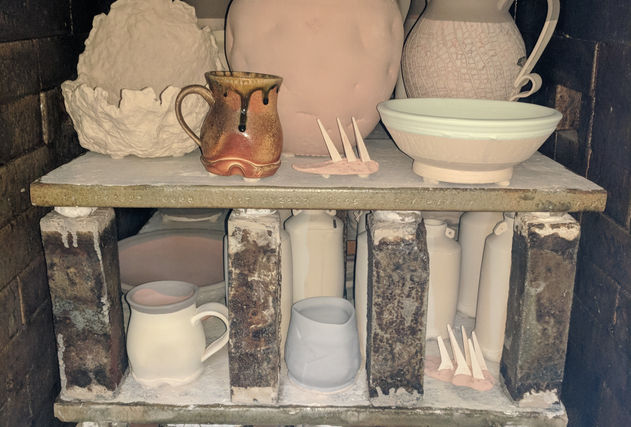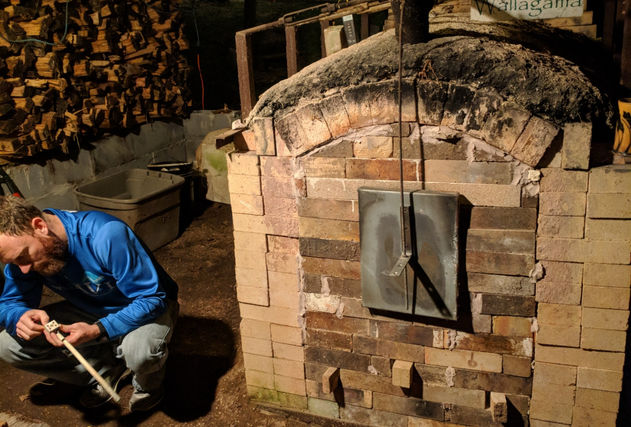Process
The process of wood firing is as old as pottery, however it faded out over the last century as other easier methods such as oil, gas, and most recently electric fired kilns have been built. Unlike these other three fuels, the wood firing leaves a mark on the pots with the fly ash coming through the kiln. My older kiln was a cross draft wood kiln which means the fire is in the front of the kiln and travels horizontally through the pots and exits out the chimney on the far side. My new kiln can be fired with gas and wood to make it a bit easier for one school teacher to fire solo. This combination of wood, gas, still leaves subtle evidence of the path of the flame on the pot. To further exemplify this effect I spray Soda Ash (sodium carbonate) mixed with water into the kiln at the highest temperatures of the firing. This creates a vapor glaze that also follows the path of the flame. As the vapor glaze and fly ash create their own glaze on everything in the kiln all the pots must be stacked on small wads to keep them from sticking to the kiln shelves. I enjoy the marks made by these wads and sometimes choose to fire pots on their sides to make these spots part of the decoration.











